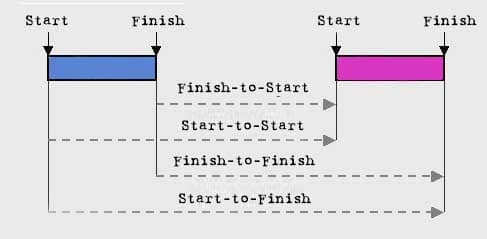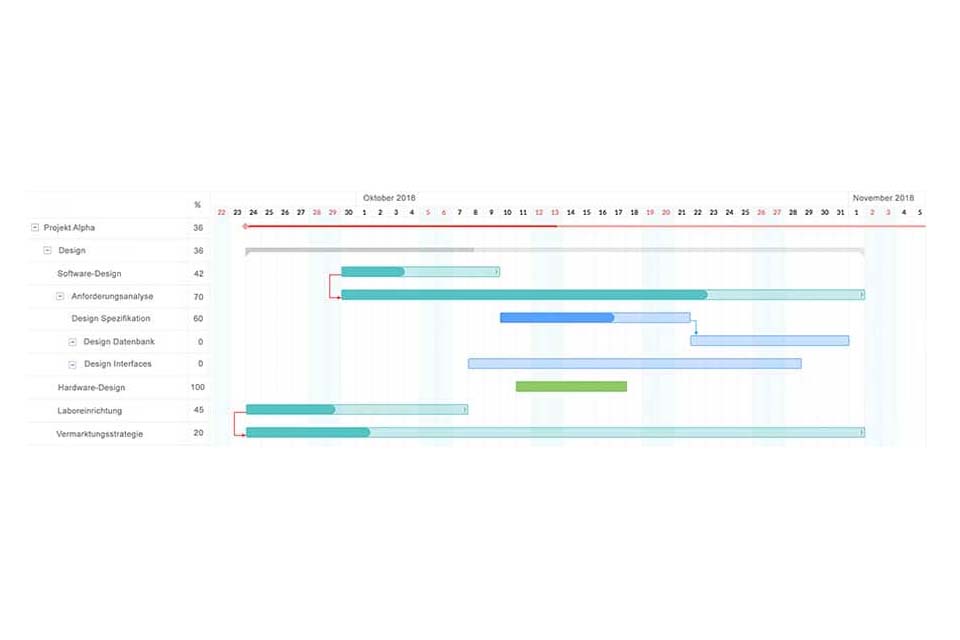What are Interrelationships of Activities?
Smartpedia: Interrelationships of activities define the temporal, practical, and logical links between planning elements in a project or product development.
Interrelationships of activities – the temporal, practical and logical planning of activities
Planning elements in a project, a venture or a product development are connected to each other temporally, practically and logically. The concrete form of these connections is called an interrelationship of activities. Depending on the terminology used, activities could also be named operations, tasks, activities, work steps, work packages or work items.
When defining interrelationships, two aspects must be taken into account:
- Binding and non-binding relationships. Binding relationships define a fixed point in time for an activity – sometimes as the start date, often as the completion date – or a factual or logical relationship. For example, software cannot be installed on a computer until it has been ordered and delivered by the purchasing department.
- External and internal relationships. In the case of external relationships, external specifications are made, for example, by customers or partners. The freedom in planning transactions is limited in comparison to the internal relationship.
Types of interrelationships of activities
There are basically four types of relationships that are used in Precedence diagrams or Gantt charts, for example:
- The normal sequence or Finish-to-Start relationship in which a successor activity begins when the predecessor activity has been completed. It is the most common in project management practice, hence the name “normal sequence”.
- The start sequence or Start-to-Start relationship where successors can start when the predecessor is started. The start sequence can – but does not have to – lead to parallel activities.
- The end sequence or Finish-to-Finish relationship in which a successor cannot be terminated until the predecessor has been terminated.
- The jump sequence or Start-to-Finish relationship in which a successor cannot be terminated until the predecessor has been started. The jump sequence is relatively rare in planning. Example: Invoicing cannot be completed until a computer has been shipped.
Notes:
If you like the article or would like to discuss it, please feel free to share it in your network. And if you have any comments, please do not hesitate to send us a message.
Here you will find additional information from our Smartpedia section:



